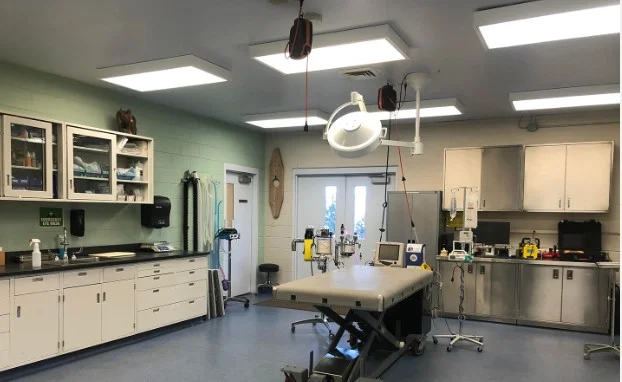Wildlife Veterinary Clinic

Wildlife Veterinary Clinic
A wildlife veterinary clinic is a specialized facility dedicated to the medical care and rehabilitation of wild animals, equipped to handle the unique needs of various species. It includes examination and treatment rooms for physical exams and minor procedures, a surgical suite for operations, and diagnostic facilities with imaging equipment and labs. An ICU provides intensive care for critically injured animals, while isolation rooms prevent disease spread.
The clinic also features rehabilitation areas, a pharmacy stocked with wildlife-specific medications, and nutrition and feeding areas. Veterinary staff offices and training rooms support treatment planning and education. These clinics are vital for helping wildlife recover and return to their natural habitats.
A wildlife veterinary clinic plays a crucial role in the conservation and welfare of wild animals by providing specialized medical care tailored to the unique needs of various species. The clinic’s facilities are designed to ensure comprehensive treatment and rehabilitation, including:
- Examination and Treatment Rooms: These are essential for conducting physical exams and performing minor medical procedures. They are equipped with tools and supplies specifically suited for different species.
- Surgical Suite: A fully equipped operating room designed for performing surgeries on wild animals, ensuring that even complex procedures can be handled with precision.
- Diagnostic Facilities: Featuring imaging equipment such as X-rays, ultrasounds, and on-site laboratories, these facilities allow for quick and accurate diagnosis of injuries and diseases.
- Intensive Care Unit (ICU): This unit provides critical care for seriously injured or ill animals, with continuous monitoring and specialized treatments to stabilize and recover wildlife.
- Isolation Rooms: To prevent the spread of infectious diseases, animals that may be contagious are housed in isolation rooms, ensuring the safety of other patients.
- Rehabilitation Areas: These spaces are designed for the recovery and rehabilitation of animals, providing environments that simulate natural habitats to prepare them for a return to the wild.
- Pharmacy: Stocked with wildlife-specific medications, the pharmacy ensures that all necessary drugs and treatments are readily available for any condition that may arise.
- Nutrition and Feeding Areas: These areas are crucial for the dietary management of recovering animals, providing species-specific diets to support their health and recovery.
- Veterinary Staff Offices and Training Rooms: These areas support the planning and coordination of treatments, while also serving as educational spaces for ongoing training and development of the veterinary staff.
By offering specialized care, these clinics are vital for helping injured or sick wildlife recover and eventually return to their natural habitats, contributing significantly to conservation efforts and the overall health of ecosystems.
